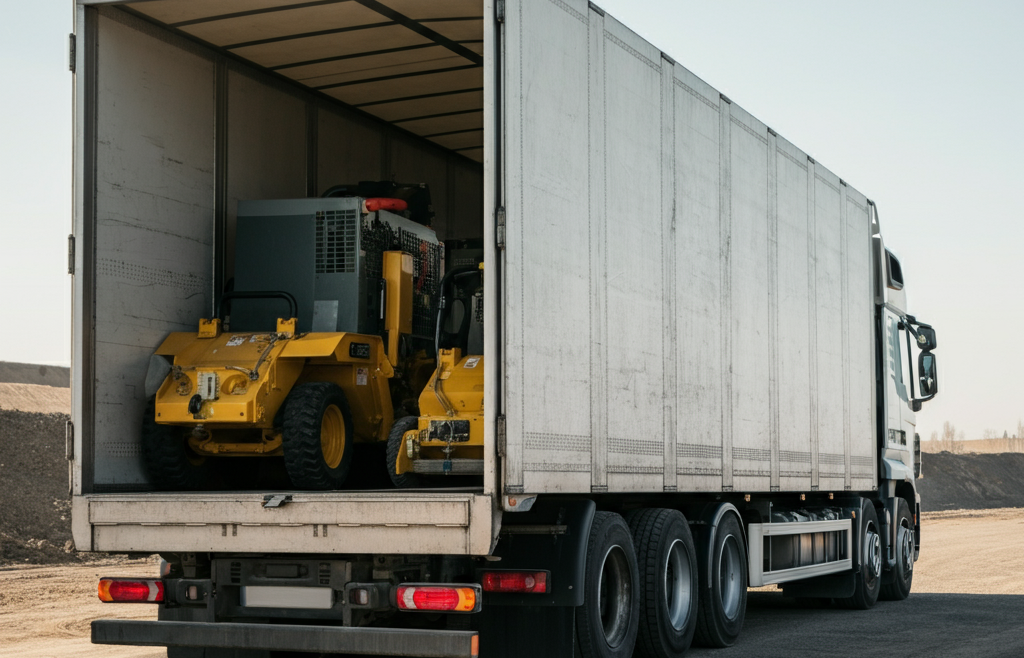Transporting heavy machinery across Europe isn’t just about moving oversized equipment from point A to point B—it’s a high-stakes operation that requires precision, expertise, and an unwavering commitment to safety. From navigating intricate cross-border regulations to safeguarding multi-ton loads on busy roads, every step presents unique challenges. Yet, with the right strategies and partners, even the heaviest burdens can be carried confidently and efficiently.
Understanding Heavy Machinery Transport
Transporting heavy machinery, such as construction equipment, industrial machinery, and agricultural vehicles, requires meticulous planning and adherence to strict regulations. These oversized loads demand tailored logistics solutions and specialized equipment to manage their size and weight, ensuring safe and efficient delivery across Europe.
Challenge 1: Navigating Legal Regulations Across Borders
One of the most significant challenges in transporting heavy machinery is complying with the diverse legal requirements across European countries. These rules often include maximum weight and size limits for vehicles, designated routes for oversized loads, and requirements for escort vehicles. For example, Germany mandates “Abnormal Load Permits” for machinery exceeding standard dimensions, while France requires specific nighttime transport restrictions in certain regions. Failure to meet these requirements can lead to fines, shipment delays, or legal penalties.
Challenge 2: Handling and Loading Heavy Equipment
Proper handling and loading of heavy machinery are critical to prevent damage and ensure safety. Due to their size and weight, these machines require specialized cranes, forklifts, and flatbed trailers. Skilled operators assess weight distribution and use specialized equipment for loading, preventing accidents or damage during transit. Incorrect handling can lead to accidents, damaging both the equipment and infrastructure.
Challenge 3: Ensuring Road Safety During Transport
Transporting heavy machinery across European roads presents unique safety challenges. The significant weight of the cargo increases braking distances, while oversized dimensions raise the risk of rollovers on sharp turns. Additionally, the limited visibility of such loads can pose dangers to other road users. To mitigate these risks, adherence to stringent safety regulations is crucial. Experienced drivers, well-versed in handling oversized loads, play a key role in ensuring secure transportation. Escort vehicles are often deployed to guide these shipments, particularly through busy or narrow routes, enhancing overall safety.
Challenge 4: Cost Management
The financial demands of transporting heavy machinery can be substantial. Costs arise from acquiring the necessary permits and licenses, employing specialized equipment and operators, and accounting for high fuel consumption and toll charges across European highways. Effective cost management strategies are essential to alleviate these expenses. Optimized route planning reduces travel distances and fuel usage, while consolidating shipments minimizes the number of trips required. These measures ensure cost efficiency without compromising safety or reliability.
Challenge 5: Securing Equipment During Transport
Properly securing equipment is essential when transporting heavy machinery to ensure its safe arrival and avoid accidents or damage during transit. High-strength chains and straps firmly hold the machinery in place, while protective coverings shield it from adverse weather conditions. Anti-vibration pads are often employed to minimize movement, reducing the risk of structural stress or misalignment during the journey. Failure to implement these measures when transporting heavy machinery can result in costly damages, operational delays, and serious safety hazards.
Challenge 6: Timing and Scheduling
Transporting heavy machinery for time-sensitive projects demands precise coordination and adherence to strict schedules. However, delays are a common challenge, often arising from factors such as border checks, customs clearances, and unfavorable weather conditions. Traffic congestion on major European routes can further complicate timelines. To mitigate these risks, advanced tracking systems are employed to monitor shipments in real-time, while proactive communication with all stakeholders ensures swift adjustments to schedules when unforeseen delays occur.
Technological Solutions for Transporting Heavy Machinery
Modern technology plays a pivotal role in addressing the challenges of heavy machinery transport. Companies now leverage:
- Telematics systems for real-time tracking of shipments for better visibility.
- Route optimization software to reduce transit times and fuel costs.
- Load monitoring sensors to ensure proper weight distribution during transport.
- Digital documentation tools to simplify customs procedures and regulatory compliance.
These innovations enhance efficiency, reduce risks, and improve customer satisfaction.
Tips for Choosing the Right Transport Partner
Selecting a reliable logistics partner is key to overcoming these challenges. Here are some tips:
- Choose a company with proven experience in transporting heavy machinery.
- Ensure they have specialized tools and vehicles for the job.
- Look for testimonials from previous clients to gauge reliability.
- Opt for a partner that offers transparent updates and support.
- Companies utilizing advanced logistics tech can streamline processes and improve outcomes.
Transporting heavy machinery across Europe demands meticulous planning, expertise, and the right resources. By understanding the challenges and leveraging advanced solutions, companies can ensure the safe and timely delivery of oversized loads.
To make this process simple, entrust your load to professionals. Wincom Logistik offers tailored logistics services to help you navigate these complexities and meet your unique transportation needs.


Leave a reply